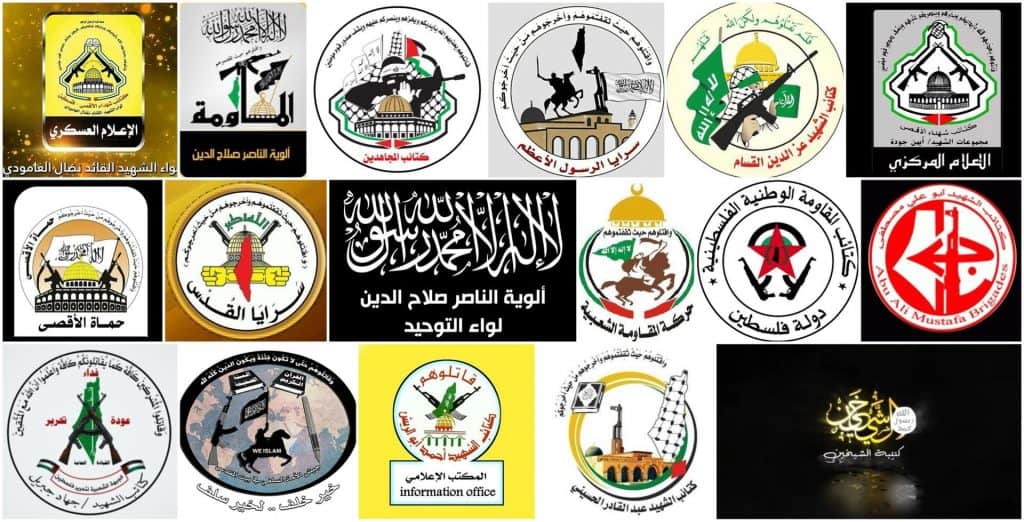
The recent conflict in Gaza was primarily fought between Hamas’ military wing, al-Qassam Brigades, and the Israel Defense Forces (IDF). However, a total of 17 Palestinian militant groups have been identified by FDD’s Long War Journal as active participants in the eleven day conflict.
The conflict began May 10 when the spokesperson of al-Qassam Brigades, Abu Obeida, published a statement saying Israel had until 6:00 pm local time to withdraw its forces from al-Aqsa Mosque and to release those who were arrested in clashes with Israeli police. Israel did not fulfill the demand and subsequently the militant group fired rockets towards Jerusalem.
FDD’s Long War Journal was able to identify militant activity during the conflict through previously established media channels operated by the various Palestinian factions.
Al-Qassam Brigades, and Palestinian Islamic Jihad’s Saraya al-Quds were the most active groups in publishing evidence of their attacks. Both groups also used their online platforms to unveil rockets and drones not seen in previous clashes.
Smaller factions such as Humat al-Aqsa and Jihad Jibril Brigades also published footage depicting their militants launching rockets and mortars towards Israeli communities near the Gaza border.
Furthermore, salifist-jihadist groups such as Jaysh al-Umma and Katibat al-Sheikh al-Emireen published claims of responsibility and footage of attacks against Israel.
Other notable groups involved in the conflict were, Mujahideen Brigades, Abdul al-Qadir al-Husseini Brigades and two splinter groups from al-Aqsa Martyrs Brigades.
An Attempt to Appear United
Initially, an attempt was made by approximately one dozen Palestinian factions to appear as a united front via its much touted ‘Joint Operations Room’ (JOR). Several statements were published referencing attacks against Israeli targets but as fighting wore on, publications became less frequent, leading up to a complete cessation of published statements for nine days.
The absence in statements suggests the JOR may be more of a façade to give the appearance militant factions are fighting as a Palestinian quasi-army. But in reality, the fighting involved a loose connection between most of the militant factions in Gaza.
There were several attempts by so-called Axis of Resistance groups in Lebanon and Syria to distract Israel, in an attempt to relieve some of the pressure Gaza factions were under due to the near constant aerial bombardment of militant positions by Israeli war planes, drones and artillery.
On May 17, six rockets were fired from southern Lebanon towards northern Israel. The attack had been timed with rockets launched from Gaza toward southern Israel. One day later, an armed Iranian UAV was shot down as it approached Israel’s border with Jordan.
Although there wasn’t an official claim of responsibility for the assault from Lebanon, it is likely the attackers were members of one of the various militant groups who operate from the Palestinian refugee camps of southern Beirut. It is noteworthy to mention that it is highly unlikely the attacks would have occurred without a greenlight from Hezbollah.
There was also an interview with the editor-in-chief of al-Akhbar, a Lebanon-based news organization, alleging Hezbollah, Hamas and the IRGC established a joint operations room in Beirut to assist Palestinian factions in Gaza. The piece alleged Hezbollah was able to transfer ‘ammunition’ and ‘weaponry’ to Gaza during the conflict. Adding that drones were used to monitor the ‘movements’ of Israeli forces to prevent attacks against Palestinian militants.
Although it is possible there was some coordination between members of the so-called Axis of Resistance, the claim of arms transfers and drones monitoring IDF movement is likely a fabrication that serves as propaganda to bolster the image of Hezbollah and the IRGC. Additionally, despite the alleged establishment of a joint operations room in Beirut, al-Qassam Brigades, and other militant factions incurred heavy losses in the fighting including battle-experienced commanders and militants who will be difficult to replace before the next conflict with Israel.







